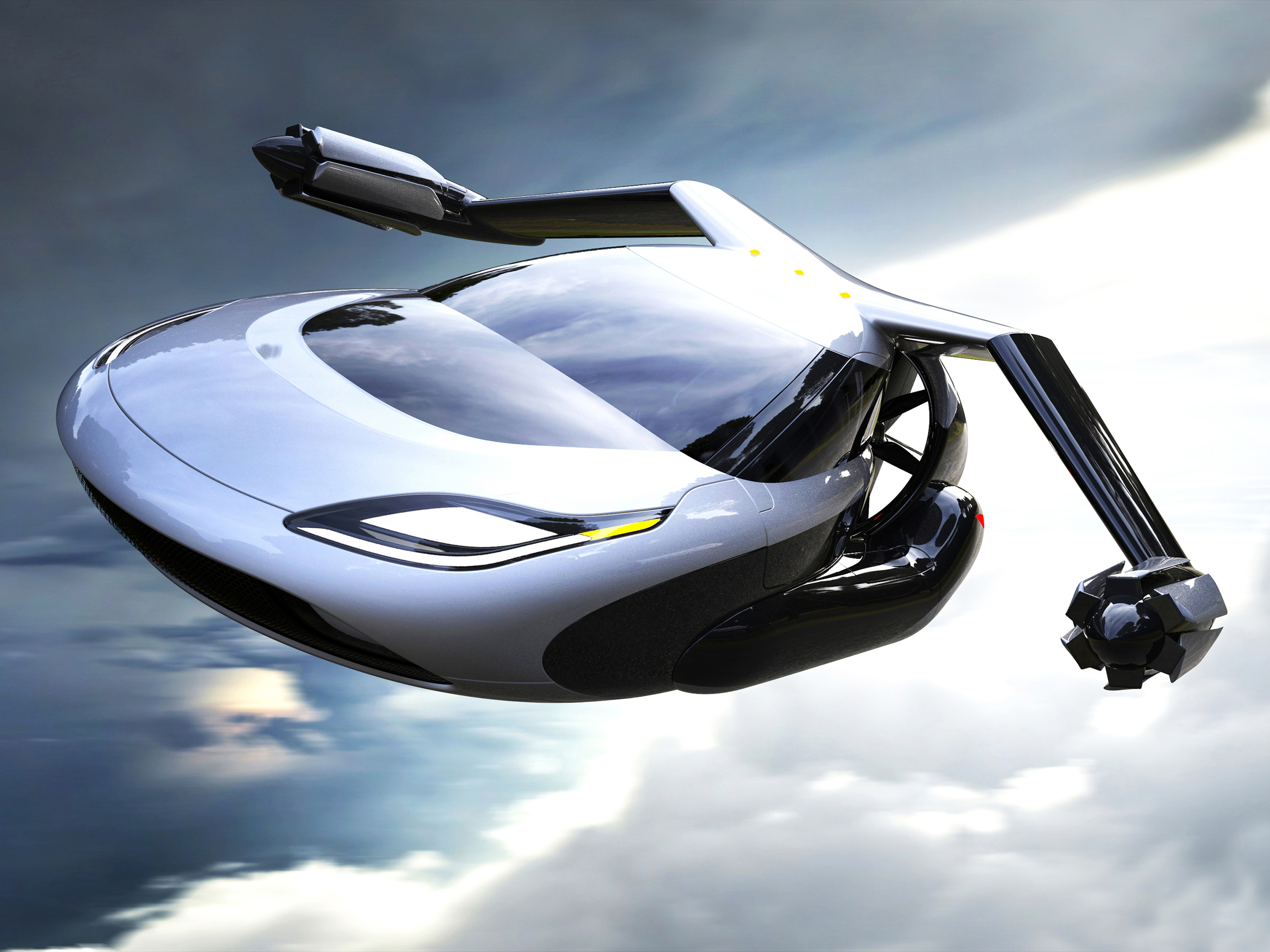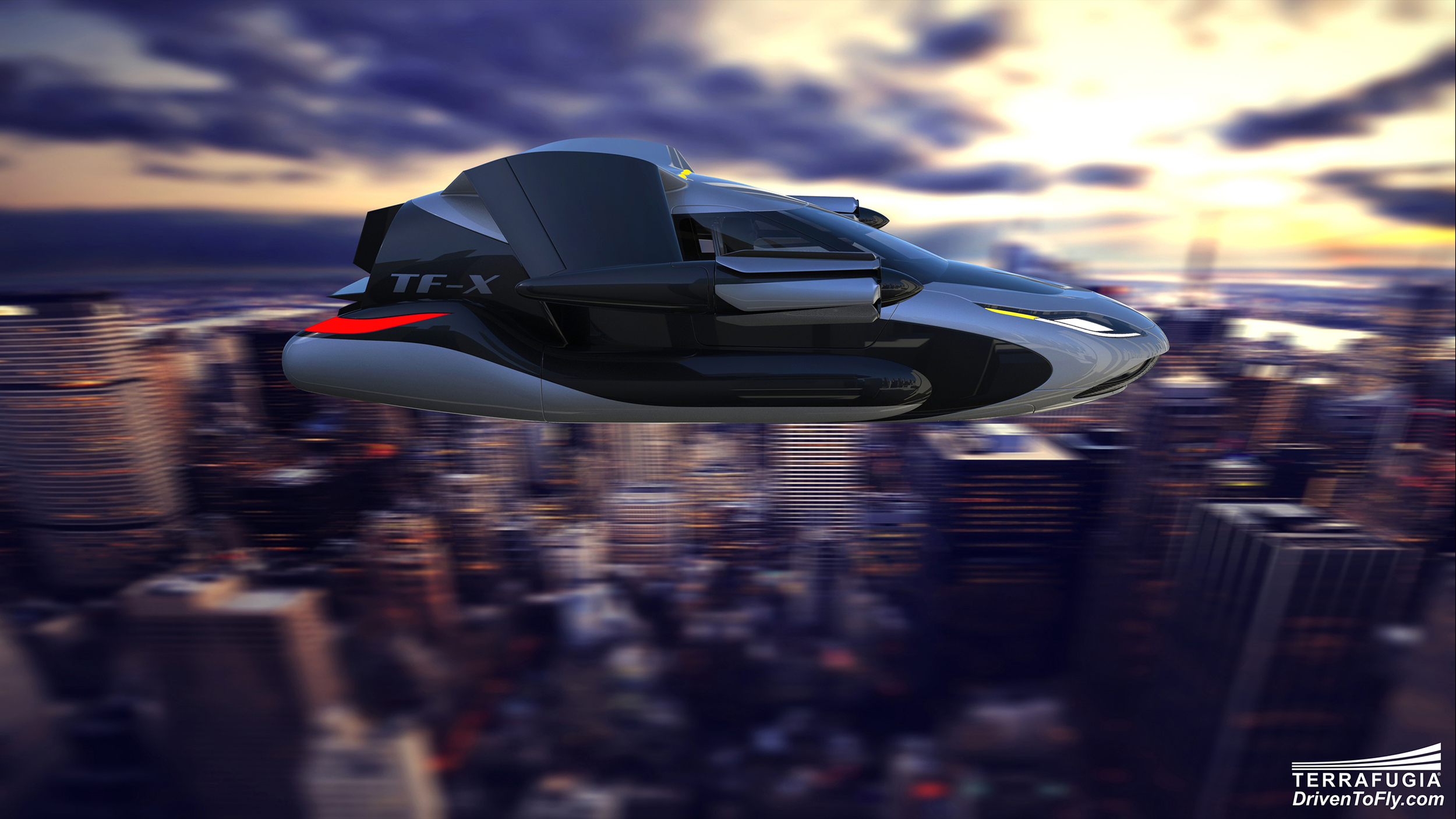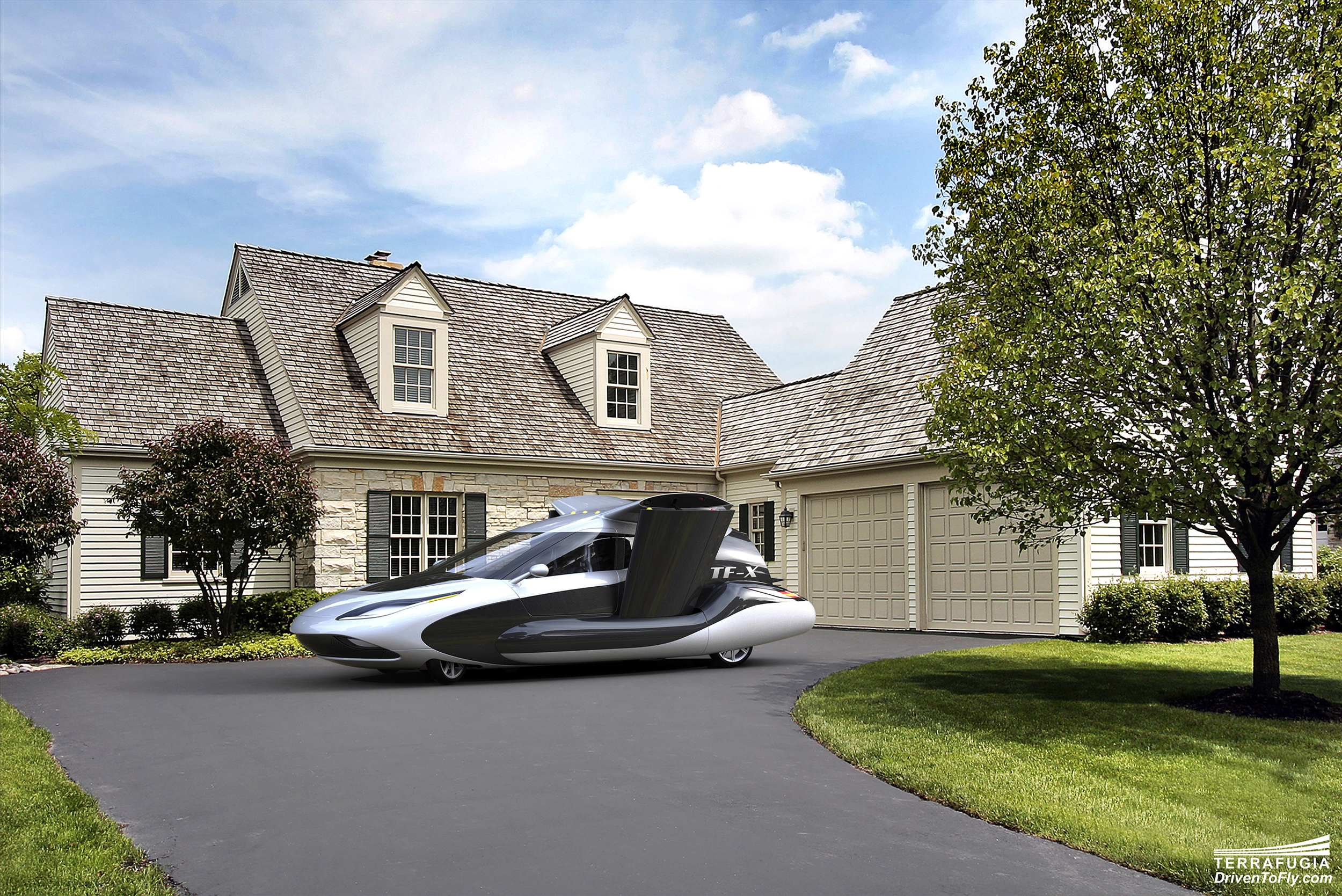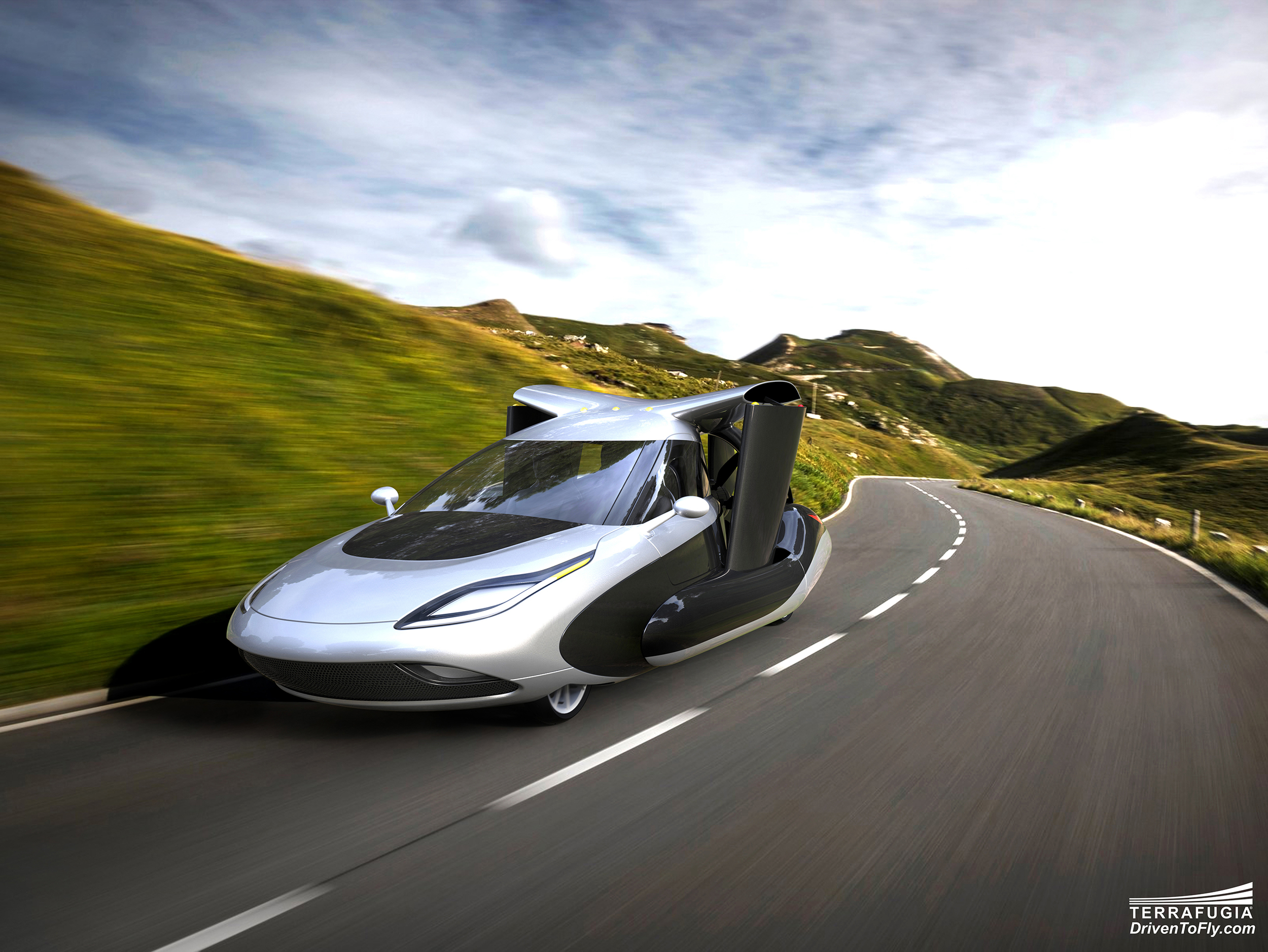




US-based manufacturer Terrafugia has unveiled plans for its latest flying car - the TF-X.
The company behind 2012s 'Transition' flying car has confirmed its plans for a four-seat, vertical takeoff and landing (VTOL) hybrid electric aircraft. The TF-X will be able to recharge its batteries either from its engine or by plugging in to electric car charging stations. Carrying four people in car-like comfort the TF-X is designed to fit in a single car garage and is able to takeoff vertically from a level clearing of at least 100ft in diameter, and will have a non-stop flight range of at least 500 miles.
The company claims that operating a TF-X vehicle 'should be statistically safer than driving a modern automobile' as the flying car will be capable of automatically avoiding other air traffic, bad weather, restricted and tower-controlled airspace.
Terrafugia says learning how to safely operate the car should take an average driver no more than five hours, and that the owner will get significant freedom in flight. Controlled in a manner similar to steering a car, it can fly in either "manual" or "automatic" modes between approved landing zones or airports.
The flying car will have a backup full-vehicle parachute system which can be activated in an emergency if the operator believes the TF-X to be incapable of auto-landing. In an emergency, the TF-X can be landed in non-approved landing zones and will automatically notify authorities of the situation.
The first computer generated images reflect Terrafugia's updated 'Outer Mold Line' (OML) design for the TF-X, developed in collaboration with Ben Schweighart and Transportation/Automotive Designer Vedran Martinek. In addition, a one-tenth scale wind tunnel test model of the TF-X has been successfully developed based on the new OML, and will be tested at the MIT Wright Brothers wind tunnel, the same tunnel that was used to test models of Terrafugia's Transition. The wind tunnel test model will be used to measure drag, lift and thrust forces while simulating hovering flight, transitioning to forward flight and full forward flight.
Terrafugia claims the TF-X will be priced as low as possible - allowing the company to grow support and a customer base, with development of TF-X expected to last 8-12 years. Final pricing will be set much closer to delivery.
